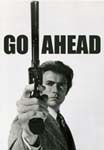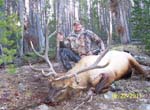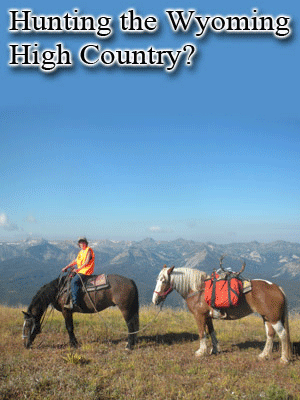When you lose 30-40% of the entire deer herd from 2016, it'll take time and favorable winters to get that back. Habitat shows us that we'll never get back to the late '80s. This last winter did not help, but I will still be looking for a buck on the mountain with my kids this year and enjoying just hunting deer whether we see giants or not. Take from it what you want; below is from the G&F 2019 Hunting Forecast:
The Wyoming Range Deer Herd (Hunt Areas 134, 135, 143-145) is designated as a special management strategy herd which focuses on providing high quality hunting opportunities, mature age class deer, and high buck:doe ratios (30-45:100). The winter of 2016-2017 was extremely severe, with very heavy losses of fawns and adults documented. The winter of 2017-2018, however was very mild and even though the 2017 fawn crop was not large, most survived and helped with the recovery of this deer herd. A comprehensive deer abundance survey on all winter ranges of the Wyoming Range deer herd in mid-February 2018 (which required two helicopters and 133 hours of flight time to complete) produced a total of 25,317 deer actually observed and an estimate of 30,500 deer. This survey gave managers more confidence that current methods of estimating deer numbers accurately track the population and will be very helpful in monitoring the recovery of this deer herd.
The southern portion of the herd unit will offer 13 days of antlered deer hunting in Hunt Areas 134 and 135. As in the last two years, an antler point regulation will allow hunters to take antlered mule deer with three points or more on either antler in Area 134. In Area 135, hunters will be permitted to take antlered mule deer or any white-tailed deer. General license hunting opportunity for antlered mule deer will run from September 15 - October 6 for Hunt Areas 143-145. In Hunt Area 145, a total of 50 limited quota Type 3 licenses valid for any white-tailed deer will be in place from November 1 to November 15, and unused Type 3 licenses valid for antlerless white-tailed deer will continue from November 16 to January 31. Due to the severity of the 2016-2017 winter and associated deer losses, reductions to the nonresident quota were implemented in both Regions G and H in 2017. These quotas remain the same for 2019, and are 400 in Region G and 600 for Region H. Reduced nonresident quotas combined with a shorter general license season for all hunters will help meet the special management criteria of maintaining at least 30 bucks:100 does and assuring older age class bucks remain in the population.
2019 Statewide Fall Hunting Forecast ? Page 9
The 2018 hunting season produced some exceptional buck deer, and hunter satisfaction was quite high even though many portions of the Wyoming Range were closed due to wildfire control efforts. Even though late winter conditions in the Jackson area were quite severe, deer winter ranges along the east slope of the Wyoming Range did not experience this, and impacts are not expected to be above normal. Southern portions of the herd unit did experience increased snow depths in late winter that translated into higher than normal levels of fawn losses.
The northern portion of the Sublette Deer Herd includes Hunt Areas 146, 150-152, 155 and 156 in the Jackson Region. Again, due to high deer mortality caused by severe winter conditions in 20162017 and the need to promote population growth, the reduced nonresident quota, shortened season, and antler point restriction will remain in place for 2019. Winter range conditions for some portions of the Sublette Herd were relatively harsh in late winter, although the late onset of severe weather will hopefully minimize impacts.
As the Wyoming Range and Sublette mule deer herds recover from the 2016-2017 winter, and numbers begin to increase, it is the intent to increase hunter opportunity in the form of additional hunting days and appropriate increases in nonresident quotas. In addition, the 3-point or better antler point restriction should be removed to allow more opportunity and reduce hunting pressure placed on adult bucks.
2019 Statewide Fall Hunting Forecast ? Page 10
Pinedale
Portions of two mule deer herds are managed in the Pinedale Region: the Sublette and Wyoming Range herds. Both are large populations with special management strategies designed to provide high quality hunting opportunities, older age class deer and high buck:100 doe ratios (30-45:100). For the Sublette herd, this population decreased below the post-hunt population objective in 2004 following significant winter losses when fawn mortality was estimated at 75% and adult mortality
2019 Statewide Fall Hunting Forecast ? Page 11
at 20%, and has remained below desired population objective levels since that time. Despite improved spring moisture and improved shrub productivity from 2009 to 2011, deer losses were extreme from the 2010-2011 winter, with an estimated 70% fawn loss. Dry conditions during 2012 and 2013 resulted in poor production on winter habitats followed by improved moisture and forage production in 2014 and 2015. Good fawn survival during 2014-2016 resulted in population growth, but losses during the 2016-2017 were again extreme. Despite a mild winter and excellent fawn survival during winter 2017-2018, snow depths on Sublette deer winter ranges during 2018-2019 were considerable. Change in ratio surveys conducted in April of 2019 indicated about 50% of the fawns were lost during winter. Adult survival estimates of telemetered Sublette deer from ongoing research with the University of Wyoming indicated 76% survival, with some mortalities occurring as late as May.
The goal of the 2019 hunting season for the Sublette mule deer herd (hunt areas 130, 131, 138142, 146, 150-156, 162) is to minimize buck harvest to maintain postseason buck:doe ratios above 30:100, while still allowing hunting opportunity. Maintaining the current nonresident quota at 600 licenses, coupled with a short hunting season and antler point restrictions (3 points or more) for a third year in a row should help achieve these goals. General license seasons are proposed to run from September 15-October 6, closing on the first Sunday of October.
The Wyoming Range deer herd (hunt areas 134, 135,143-145) also suffered heavy losses during the winter of 2016-2017, with documented losses of all radio-collared fawns and 35% of telemetered adult does, equating to an over-winter loss of approximately 40% of the entire deer herd. Conversely, the winter of 2017-2018 was exceptionally mild and allowed increased fawn survival. However, the winter of 2018-2019 was also severe, but impacted mule deer wintering on the more southern ranges (Evanston-Cokeville) greater than winter ranges near LaBarge.. Change in ratio surveys conducted in April 2019 indicated a loss of nearly 30% of fawns for the entire herd, but a 70% loss in hunt area 134 compared to only a 13% loss in hunt area 143.
The impact of the 2016-2017 winter was seen in December 2017 post season surveys, which indicated that fawn production and survival was low with only 54 fawns:100 does. In 2018, fawn:doe ratios improved slightly to 60 fawns:100 does, but remain lower than the previous fiveyear average (2013-2017) of 64 fawns:100 does. Yearling buck:doe ratios improved from 5:100 in 2017 to 12:100 in 2018 reflecting increased survival. Although adult buck:doe ratios dropped to 29:100 in 2017, they bumped up to 30:100 in 2018, within management objectives.
The southern portion of the Wyoming Range herd will offer 13 days of antlered deer hunting in hunt areas 134 and 135, allowing hunters to take antlered mule deer with three points or more on either antler or any white-tailed deer. General license hunting opportunity for antlered mule deer will run from September 15-October 6 for hunt areas 142-145. In hunt area 145, a total of 50 Limited quota Type 3 licenses valid for any white-tailed deer will be in place from November 1November 15, and unused Type 3 licenses valid for antlerless white-tailed deer will continue from November 16-January 31.
Region G and Region H nonresident deer quotas will remain at 400 and 600 licenses, respectively. Conservative nonresident quotas combined with a short general license seasons for all hunters will help meet the ?special? management criteria of maintaining at least 30 bucks:100 does and maintain quality bucks in the population.

 Urge 2 Hunt
Urge 2 Hunt

